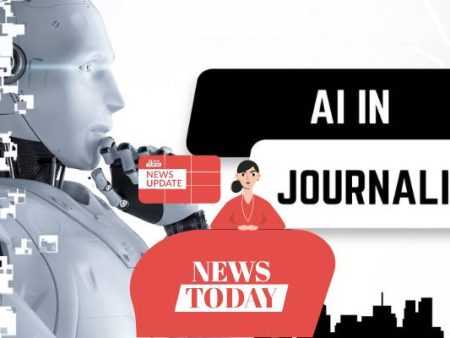Video has become the backbone of digital communication. Whether it’s a TikTok clip, a YouTube explainer, or a film in theaters, audiences expect seamless experiences.
But here’s the thing: video is only as powerful as its accessibility and clarity. Without subtitles, captions, or voiceovers, entire audiences are excluded.
For years, producing these extras was tedious—transcribing dialogue manually, hiring voice actors, paying for translators. Today, that process has been upended. Thanks to AI, creators and companies can generate subtitles, captions, and voiceovers automatically—and at scale.
But here’s the question: how well does it actually work? And should we welcome it wholeheartedly, or approach it with cautious optimism? Let’s dig deep.
Why Subtitles and Voiceovers Matter More Than You Think
First, a reminder of why this topic is so crucial.
Accessibility isn’t a “bonus feature.” It’s fundamental. The World Health Organization estimates that 1.5 billion people worldwide experience hearing loss. Without captions or subtitles, those audiences are left out of video storytelling altogether.
But it’s not just about hearing loss. Studies show that 80% of social media videos are watched with the sound off. Whether people are in noisy environments, quiet offices, or just scrolling quickly, text on screen makes the difference between engagement and abandonment.
Voiceovers matter too. They expand your reach across languages and demographics. They bring personality, emotion, and intimacy to otherwise flat visuals. And when done right, they can make or break a viewer’s connection with your story.
The Old Way vs. The AI Way
Traditionally, creating subtitles and voiceovers was a laborious chain of tasks:
- Transcribe audio manually.
- Translate into target languages.
- Hire or record voice actors.
- Sync text and audio to the video timeline.
- Double-check everything for errors.
If you’ve ever done this yourself, you know how draining it is. And if you’ve paid for it, you know how expensive it can be.
AI disrupts this entire process. With speech recognition, natural language processing, and voice synthesis, you can now upload a video and get synchronized subtitles, translations, and voiceovers in minutes.
It’s not flawless, but compared to the old way? It feels revolutionary.
How AI Subtitles Work
Let’s break it down simply.
AI listens to your video through automatic speech recognition (ASR). It identifies words, punctuation, and even speaker changes. Then it aligns that text with the audio waveform, creating time-coded captions.
The best systems now adapt to accents, slang, and technical terms. Some even allow custom glossaries, so if you’re producing content about biotech or cryptocurrency, the AI won’t stumble over jargon.
Once you’ve got the base language, machine translation can spin out subtitles in dozens of other languages.
AI Voiceovers: The Other Side of the Coin
Subtitles and captions are text. Voiceovers, though, add another sensory layer.
Modern AI text-to-speech (TTS) systems can mimic natural human intonation—pauses, emphasis, even subtle emotion. Some platforms let you choose styles: enthusiastic, calm, formal, conversational. Others can even clone your own voice.
This is where ai video avatars also come in. Imagine pairing an avatar with an AI-generated voice that matches your brand or personality. Suddenly, you can deliver a polished presentation without ever stepping in front of a camera.
And here’s the wild part: these avatars and voices can switch languages instantly. You could speak in English, and the system could generate a Spanish or Mandarin version—lip-synced to match.
Popular Tools in the Space
Let’s talk tools, because theory only takes us so far.
- Descript: Famous for “Overdub,” which clones your voice and lets you edit audio as easily as editing text.
- Synthesia: Known for AI video avatars and multilingual voiceover generation.
- Sonix: Excellent for transcriptions and multilingual subtitle creation.
- Rev AI: A hybrid of AI and human verification, striking a balance between speed and accuracy.
- Papercup: Specializes in AI dubbing for international content distribution.
I’ve used several of these. My take? Descript is incredible for podcasters and educators. Synthesia is unbeatable for businesses that need polished, scalable content. And Sonix is my go-to for fast transcription.
Emotional Nuance: Where AI Stumbles
Here’s my honest opinion: AI is brilliant at speed and efficiency, but it still struggles with emotion.
I once tested an AI-generated voiceover for a heartfelt nonprofit campaign. The words were right, the timing was right—but the soul was missing. The pauses felt mechanical. The “smile in the voice” just wasn’t there.
Humans pick up on these subtleties. Sometimes, imperfection—like a slight crack in a voice—carries the real weight of meaning. AI hasn’t mastered that yet.
That said, the tech is evolving. Some newer systems are surprisingly warm. And in contexts like e-learning or product tutorials, the slight lack of emotion isn’t a dealbreaker.
Using AI to Create Short-Form Content Forms
One of the most exciting uses of automatic subtitles and voiceovers is in social media. TikTok, Instagram Reels, YouTube Shorts—they all thrive on accessibility and speed.
AI makes using AI to create short-form content forms almost effortless. You can film once, then:
- Auto-generate captions for silent viewing.
- Translate into multiple languages for global reach.
- Add AI voiceovers to localize the audio.
Suddenly, your video isn’t just one piece of content—it’s a dozen, each tailored to a different audience. That’s scale that was unimaginable just a few years ago.
AI in Hollywood: A Bigger Picture
You might think this is just for social media creators or small businesses. But AI in Hollywood is already making waves.
Studios are experimenting with AI dubbing to release films faster in multiple markets. Instead of waiting months for traditional dubbing, AI can generate multilingual versions almost instantly.
Voice cloning is another frontier. Imagine an actor’s voice re-created for reshoots or dubs without them stepping into a booth. It’s controversial, yes, but undeniably powerful.
And captions? With global streaming, subtitles are non-negotiable. AI ensures they’re produced quickly, though human oversight is still crucial for nuance and cultural accuracy.
Ethical Concerns
We can’t have this conversation without addressing ethics.
- Consent: Should actors have control over AI-generated versions of their voices?
- Accuracy: Subtitles aren’t just text—they’re interpretation. A mistranslation could distort meaning or offend audiences.
- Employment: What happens to voice actors, translators, and captioning specialists if AI takes over their roles?
Personally, I believe AI should complement, not replace. Use it for scale, then bring in humans to refine. That balance preserves both efficiency and artistry.
Accessibility and Inclusion
This might be the most important piece. Subtitles, captions, and voiceovers are not only about marketing—they’re about equity.
AI makes it possible to produce accessible content faster than ever. And when platforms build in features like customizable caption styles or narration for visually impaired users, they’re doing more than ticking boxes. They’re building inclusive digital spaces.
The U.S. Census Bureau reports that over 42 million Americans have disabilities (Census.gov). Accessibility isn’t optional—it’s essential.
My Personal Workflow
To make this practical, here’s how I often use AI in my own projects:
- Record the raw video (usually unscripted).
- Upload to Descript for transcription.
- Clean up the script, auto-generate captions.
- Export multilingual versions through Sonix or Synthesia.
- Review everything manually—especially the emotional tone.
This combination saves me hours, sometimes days. But I still check for nuance, because I’ve seen AI mistranslate idioms or flatten humor.
The Future: Where We’re Headed
In the near future, I expect AI to:
- Perfect lip-sync dubbing across languages.
- Add emotional intelligence to voiceovers.
- Allow real-time captioning and translation in live streams.
- Integrate seamlessly with AI video avatars, making communication borderless.
Imagine watching a live webinar where the speaker’s words are instantly subtitled in your language, voiced in real-time by AI, and accompanied by an avatar that mirrors their gestures. It sounds futuristic, but it’s not far away.
Final Thoughts
Automatic generating subtitles, captions, and voiceovers with AI isn’t just a convenience—it’s a transformation. It opens doors for accessibility, expands global reach, and saves creators from burnout.
But it’s not perfect. Emotion, nuance, and ethics still need human hands and hearts. My advice? Embrace the tools, but don’t abdicate responsibility. Use AI to scale, then polish with human empathy.
Because at the end of the day, storytelling isn’t about perfection. It’s about connection. And whether through captions on a smartphone, a dubbed film in another language, or an avatar delivering training, AI is helping us connect in ways we couldn’t before.


